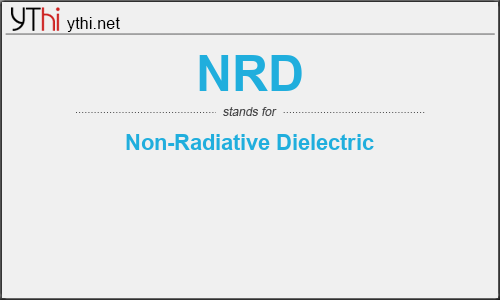What does NRD mean? What is the full form of NRD?
The Full Form of NRD is Non-Radiative Dielectric.
The non-radiative dielectric (NRD) waveguide has been introduced by Yoneyama in 1981. In Fig. 1 the cross section of NRD guide is shown: it consists of a dielectric rectangular slab of height a and width b, which is placed between two metallic parallel plates of suitable width. The structure is practically the same as the H waveguide, proposed by Tischer in 1953. Due to the dielectric slab, the electromagnetic field is confined in the vicinity of the dielectric region, whereas in the outside region, for suitable frequencies, the electromagnetic field decays exponentially. Therefore, if the metallic plates are sufficiently extended, the field is practically negligible at the end of the plates and therefore the situation does not greatly differ from the ideal case in which the plates are infinitely extended. The polarization of the electric field in the required mode is mainly parallel to the conductive walls. As it is known, if the electric field is parallel to the walls, the conduction losses decrease in the metallic walls at the increasing frequency, whereas, if the field is perpendicular to the walls, losses increase at the increasing frequency. Since the NRD waveguide has been devised for its implementation at millimeter waves, the selected polarization minimizes the ohmic losses in the metallic walls.
NRD
means
Non-Radiative Dielectric![]()
Translate Non-Radiative Dielectric to other language.


Leave a Reply
You must be logged in to post a comment.